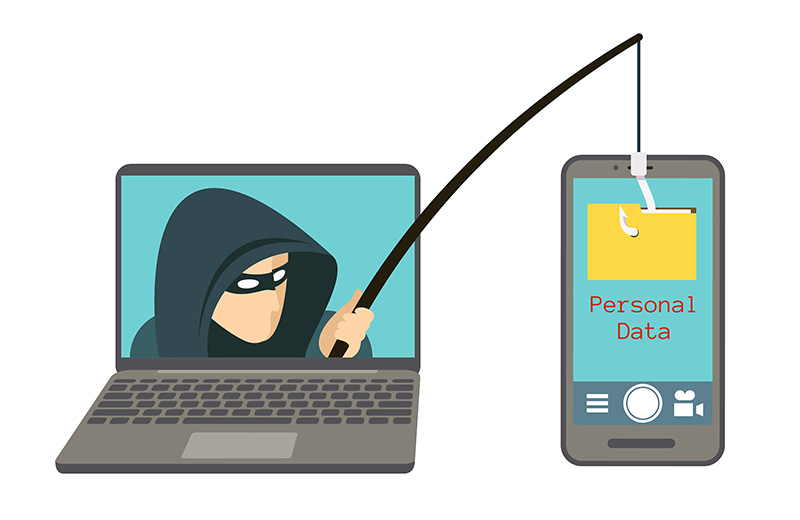Preventing Domain Hacks: A Guide for Business Owners
One precious possession a person can own is their name. It identifies who you are—everything from private to financial to legal matters requires this information. As we all know, a business domain name is a vital representation of the company on the Internet. That is why we must do our best to prevent domain hacks.
Unfortunately, domain security is one vulnerability that businesses face in the current IT landscape. Your ‘simple’ online address does so much more than guiding prospects to your website. An impactful domain name enhances your visibility and brand reputation, boosting your company’s credibility.
The issue is that criminals can seize and desecrate your domain name. Are you vulnerable to domain hacks? Does your strategy include protective measures to guard your website? How capable is your cybersecurity team that you need to prevent domain hacks?
This guide gives you valuable information regarding IT domain protection and what you can do to secure your business.
Why Domain Hacks Happen on Business Domains
At first, you might think, it’s just a name – what can hackers do with it?
Well, a lot. Some hackers target business domains mainly for the fun of it. Absurd as it may sound, this type of cyber theft is a fun challenge for some malicious attackers. More serious hackers, however, practice domain hacks for money.
When a hacker gains control over your domain name, the negative effects can snowball into irreversible losses. They can get into your communication network, send fake emails to your customers, and even access confidential data. Some hackers do domain name transfers, where they redirect your traffic to a different website, usually one that has offensive content.
Domain hacks typically also engage in phishing. After gaining control over your communication channels, they send phishing emails to your customers. They can freely obtain passwords, credit card information, social security data, and other sensitive information. Isn’t it a nightmare to think that you could lose your business because of inadequate domain security?
Effective Ways to Protect Your Domain from Hacks
Seeing how damaging this issue is, you need robust IT domain protection right now. However, how do you identify which domain security measures to implement? Are you aware of any methods to prevent domain hacks? Protecting your DNS is not as difficult as you might think.
Choose a Secure Registrar
When registering a domain name, most business owners just look at cost and privacy. The more important element, though, is security. The registrar you choose should use multi-factor authentication and have a responsive support team you can reach 24/7.
Use Separate Accounts for Domain and Web Hosting
Do you use the same account for domain and web hosting? You may need to create these accounts separately to protect your business, much better if you get different hosts. Managing multiple accounts for your domain is a challenge, but not if you have co-managed IT solutions in place.
Always Renew on Time to Prevent Domain Hacks
When did you last check the expiry of your domain name? Hijackers are always looking out for expired domain names they can easily get with no need to steal them. If a hacker successfully registers your domain under their name, it’s difficult for you to reclaim it.
Co-Managed IT Services Can Help with Domain Hacks
Lucky for businesses, there is a host of other methods for IT domain protection. If you want to leverage them all for your security, the best way is to sign up for co-managed IT services. With this IT strategy, an MSP can work together with your internal IT team to ensure that your business domain name will never fall into the wrong hands.
We can tell you more about domain security if you call us. Also, you can download this free Cyber Risk Infographic. It contains a wealth of information about domain security and other ways of protecting your business from cyber threats. Remember, knowledge is power!
How Co-Managed IT and Cybersecurity Insurance Protect Your Business
Cyberattacks pose a real threat to businesses, potentially inflicting irreversible damage and leading to bleeding losses. Gaps in your IT protection can cause a loss of data, downtime, irate customers, and stain your reputation. Ultimately, it could make your finances crumble if you are unprepared. Based on your current setup, how would you rate your company’s cybersecurity insurance?
Following the loss of clients and decline in sales, the terrifying thought of applying for bankruptcy is more real than ever. Can you bounce back from these financial mishaps? More importantly, does your company have business security solutions to make sure these nightmares never happen?
Effects of a Cyberattack on Business Finances
If you experience a cyberattack, your company’s finances will suffer without cybersecurity insurance. How do you go from having it all to scrambling to protect your business? It’s not like the hacker will walk into your bank account and directly take your money.
Ransomware is one of the most common vehicles that cybercriminals use to extort money. By unleashing this horror, they can gain control over your data and hold on to it until you pay a ransom. They don’t ask for loose change, either. The biggest pay-out recorded so far is $40 million back in 2021.
Financial loss can also occur during the recovery period following an attack. You would have to pay for the investigation, legal services, damage control, customer refunds, and other expenses during this period. Do you have cyber liability (cybersecurity) insurance to cover this incident?
Benefits of Having Cybersecurity Insurance
Cybersecurity insurance serves as protection for your business in case it becomes the target of a cyberattack. Depending on your policy, the provider can shoulder the costs directly or indirectly resulting from the attack.
This coverage may include system repair, data recovery, data breaches, ransom demands, and legal fees. A cybersecurity insurance policy also typically includes the cost of contacting clients and recovering stolen personal identities.
Even with a modest attack, the financial impact could cost more than what a small business can afford. Imagine if you have no active cybersecurity insurance—can you still hope to get back on your feet?
How Co-Managed IT Solutions Can Help
When handling the IT infrastructure of a business, many owners now opt for a co-managed IT. This strategy combines the convenience and familiarity of an in-house team with the expertise and resources of an MSP.
Co-managed IT is strongly recommended because it provides cutting-edge business security solutions across different areas, including cybersecurity insurance. The vast pool of resources available to an MSP can dramatically enhance cybersecurity for your business.
Our Final Thoughts on Co-Managed IT and Cybersecurity Insurance
Partnering with an MSP reduces your risk of becoming the next cyberattack victim. Furthermore, these providers have valuable tie-ups with the best cybersecurity insurance providers so they can easily get you a policy that meets your needs and fits your budget.
This is just the tip of the iceberg. Do you want to learn a lot more about cybersecurity insurance and the entire cyber risk landscape? Start by downloading the Cyber Risk Infographic. This free resource will open your eyes to the risks you are facing. It also underscores the value of co-managed IT services for your business and why you should contact us about it today.
Give it a quick read and if you are ready to take the next step, please let us know. We can schedule you for a call so we can discuss your business cybersecurity needs in more detail.
Recognizing the IT Security Risks Facing Your Business Today
How many real or imminent cyber threats did your company encounter in the past month? These days, it’s not unusual for a business to face IT security risks daily since hackers are becoming increasingly creative. An unknowingly clicking on a link or download can cause bleeding losses before you know it.
Did you know that in 2023, over 75% of attacks on small businesses did not even use malware? Hackers mostly use phishing and other sophisticated social engineering scams nowadays, which prey on many unaware victims. Can you spot such threats before they materialize?
When it comes to business cybersecurity, awareness is a vital element for staying safe. You must have protective measures in place, like a firewall or an antivirus program. Moreover, having an expert to help you handle these vulnerabilities is the better option.
How will you mitigate the hazard when you are unaware of the cyber threats that can harm your business? With your staff’s level of awareness, how likely is it for your company to stop an attack? If these questions lead to more confusion, now is the time to learn about IT security risks.
Most Common Types of IT Security Risks Against Businesses in 2024
Online attacks come in all forms and from all directions, making it challenging to protect your business. Here are the most common cyber threats that could affect small businesses today.
IT Security Risks – Ransomware
Hackers use ransomware to control a company’s data, which ultimately freezes operations and does massive damage to the business. The culprit would then demand a ransom for the victim to retrieve the data. When faced with this dilemma, would you pay an exorbitant amount to get your valuable information back? Most companies would say a resounding yes.
Credential Stuffing
Cybercriminals can now break into your network by attempting various login credentials. Using automated tools, they can go through millions of username and password combinations in seconds. Isn’t it frustrating that the hacker can successfully pull your login information within a substantial number of chances? Would you like to see if your passwords are on the dark web? We thought so. Contact us here to pull your report. Mention this blog to waive the cost of the report.
IT Security Risks – Social Engineering
Social engineering is a very dangerous cyber threat based on human psychology. Hackers use manipulative tactics to trick people into divulging sensitive data, like phishing, pretexting, and quid pro quo. Anyone is a potential victim, more so if the person is misinformed regarding business cybersecurity.
Take Business Cybersecurity to the Next Level with Co-Managed IT
Implementing protective measures to combat cyber threats is the first step to mitigating risks. The right steps to take include tightening your grip on IT security.
Is your team regulating access controls stringently? Do you train your employees on cybersecurity regularly? Does your company have an efficient backup and recovery plan? These factors come together to form the defenses of your business.
Cyber security is a rapidly evolving area and new threats arise practically every day. Your internal IT team, regardless of how skilled they are, is still vulnerable. In this case, co-managed IT presents a viable solution.
By taking a look at this free Cyber Risk infographic, you can have a more accurate picture of the cyber threats your business is facing. It also illustrates how a co-managed IT partner can help your in-house team in enhancing your company’s cybersecurity strategy.
Going over this information and stats will only take a couple of minutes, but it can make a vast difference in the security of your business! Call us today for more information!


